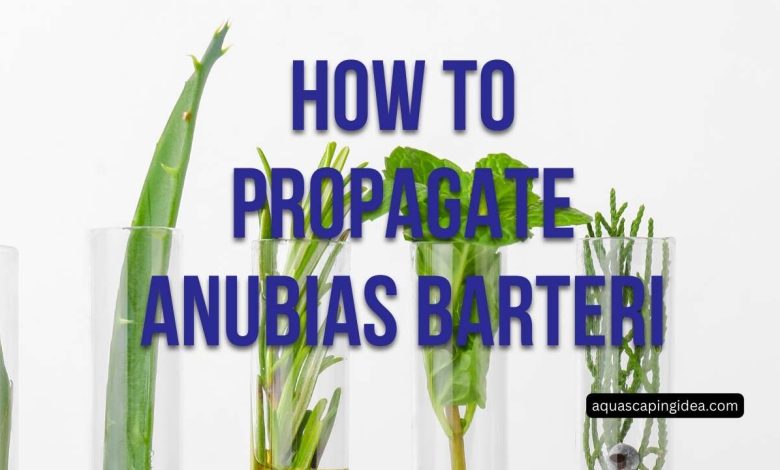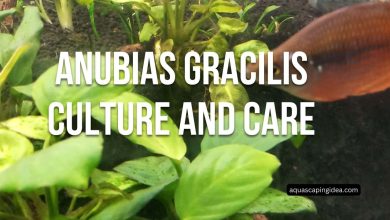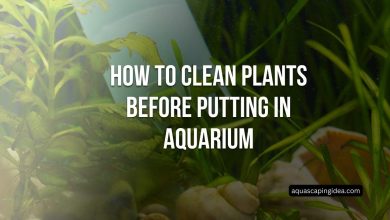How To Propagate Anubias Barteri?

Anubias prove slow but steady growers. Luckily, propagating new specimens from existing plants is straightforward for free multiplication without purchasing imports! We detail reliable at-home methods.
Mastering Propagation Techniques for Anubias Barteri Varieties
Gardeners familiar with propagating new specimens from parent plants through cuttings, offsets, and clonal division techniques should find similar processes easily adaptable when working with aquatic Anubias Barteri varieties to increase personal stock generosity without constantly sourcing (and paying for) new imports.
Whether aiming to share extra cuttings with fellow hobbyists or simply expand your own aquarium collection capacities, producing baby Anubias at home saves substantial money over the long run. But what methods work best for safely splitting these hardy plants?
By mastering a few fundamental aquatic plant reproduction methods modified for Anubias genus unique structural and reproductive characteristics, generating dozens of fresh new Barteri plants containing exact genetic duplicates of beloved existing specimens and strains proves simple, affordable, and fun!
Anubias Reproductive Basics
Identifying productive propagation points on Anubias requires understanding where new growth originates. Foliage sprouts from a thick horizontal stem-like structure termed the rhizome anchored to harder aquascapes by descending root tendrils that soak up nutrients present in surrounding water.
New leaves and roots slowly generate outward laterally from thick rhizomes covered by a protective sheath. Incising the living rhizome tissue allows dividing entire plant heads for cloning while cutting leaf-bearing stems prompts crown bushiness.
Cloning Via Rhizome Division
This traditional scheme severs larger specimens horizontally across rhizomes for resetting intact plant crowns containing pre-emerged leaves still folded into spear tips awaiting growth after re-anchoring rhizome bases. Each section must retain 3-5 leaves minimum and at least 2 root clusters for sufficient nutrient support until new radicles emerge.
Here’s a step-by-step division walkthrough:
- Carefully uproot mature anubias from decoration without damaging existing leaves
- Rinse gently under dechlorinated cool water to observe rhizome zones
- Locate thick lateral section between two leaf cluster stems
- Using sterile razor, incise rhizome cleanly across the middle of wide segment
- Trim any damaged root ends still attached using micro shears
- Set both new crowns into gel propagation plugs 20 minutes to heal cuts
- Replant each stabilized division including some root structure
Within just 2-4 weeks, newly generated feeding root hairs emerge from sliced ends commencing inorganic mineral absorption from water sources until leaves reach maturity sizes capable of supplementing energy needs.
Propagating by Stem Cuttings
Removing excess anubias foliage accelerates new crown concentrates. Trimming older leaves near their rhizome attachment point avoids harming the central growth zone while prompting faster replacements. But cuttings also generate fresh plantlets!
Follow these stem cutting steps:
- Carefully select 3-5 robust leaves joined by single connective stem
- Using sterile scalpel, slice downwards across stem without touching base rhizome
- Dip slice ends into water-phased auxinic rooting gel solution
- Insert prepared cutting bases into enclosed media propagation box 1-2 inches deep
- Once rooted, relocate new plantlets after 4-6 weeks into aquarium systems
The introduced rooting hormone solution combined with high humidity prompting stimulates accelerated radicles and cell division creating infant plants containing identical genotypes ready for isolation once exhibiting 3 leaves minimum overall.
Table 1. Ideal Newly Propagated Anubias Growth Conditions
| Variable | Range | Impact |
|---|---|---|
| Water Temperature | 76-82° F | Boosts enzyme activity speeding cell division |
| Water Changes | 10% Weekly | Reduces mineral deficiencies while avoiding pest accumulations |
| Light Interval | 8 Hours Minimum | Powers photosynthesis for energy to grow |
| Liquid Fertilizer | Added biweekly | Stabilizes nutrients between water changes |
| Propagation Duration | 4-8 Weeks | Allows root maturation before relocating |
Advanced Propagation Options More complex yet higher productivity methods include emersed transformation, plotted raft systems, and flower pollinization allowing up to 6-10 new crowns annually per parent plant given proper execution:
Emersed Cultivation
Allowing aquatic foliage extending above waterlines to remain exposed to open air prompts exploding development up to 10X faster if high 70%+ humidity held using greenhouse domes. Newly emersed leaves exhibit thicker epidermal shielding against moisture loss adapting within weeks. Carefully re-submerge adjustable leaves after 6-8 weeks for transitional acclimation back into aquatic settings.
Raft Plotting Anubias partially submerged atop floating plant grids receive maximal atmospheric CO2 absorption with roots dangling into mineralized water below. The matrix should hold 16-25 plants maximum with 1-2 inch spacing between rhizomes. Entire rafts can sink temporarily during routine maintenance. Fish-safe protective mesh avoids pest damage. Examine irrigation flow daily.
Germinating Seeds Pollinating anubias flowers once annually and nurturing resultant seeds generates rare genetically unique new specimens with desired trait combinations from selectively crossed parents. However, this remains an extremely delicate process given anubias’ reluctance towards fruiting requiring precise humidity and nutrient balances.
FAQs
Questions about multiplying anubias at home? Here are helpful answers:
Where should newly propagated anubias clones move after detachment?
Submerged enclosure containers holding 1-2 inches dechlorinated water under grow lighting. Fertilize according to rhizome size biweekly until relocated into display tanks.
Can I propagate rarer exotic anubias?
Yes! Higher value named cultivars propagate equally well. Share cuttings with fellow hobbyists. Always sterilize tools between plants to avoid transferring pathogens.
What concentration of rooting hormone works best?
Between 1000-3000 PPM dissolved auxin powder suitable for rhizome vascular tissues promotes accelerated cell differentiation and radicle emergence. Never exceed dosage guidelines.
Conclusion
All anubias barteri breeds including nana and heterophylla readily propagate when properly divided or severed from parent plant rhizomes and provided adequate warmth, hydration, and nutrients as new root zones establish independently.
Even aquarium hobby newcomers find multiplying desirable specimens relatively straightforward using the techniques detailed here without resorting constantly to specialty aquatic nurseries when stock expansion is desired. Soon your tanks will overflow with gorgeous homegrown Anubias clones!




